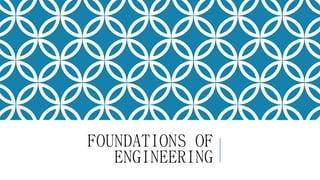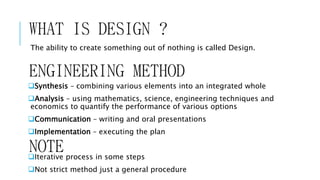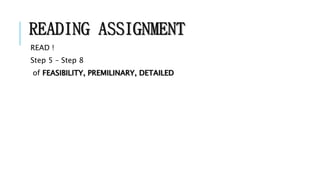The document discusses the engineering design process. It begins by defining design and outlining the engineering method, which involves synthesis, analysis, communication, implementation, and iteration. It then details the 10 steps of the engineering method: 1) identify need and define problem, 2) assemble design team, 3) identify constraints and criteria for success, 4) search for solutions, 5) analyze potential solutions, 6) choose best solution, 7) document solution, 8) communicate solution, 9) construct solution, and 10) verify and evaluate. The document provides explanations and examples for many of the steps. It also discusses techniques for searching for solutions like brainstorming and feasibility studies.

















